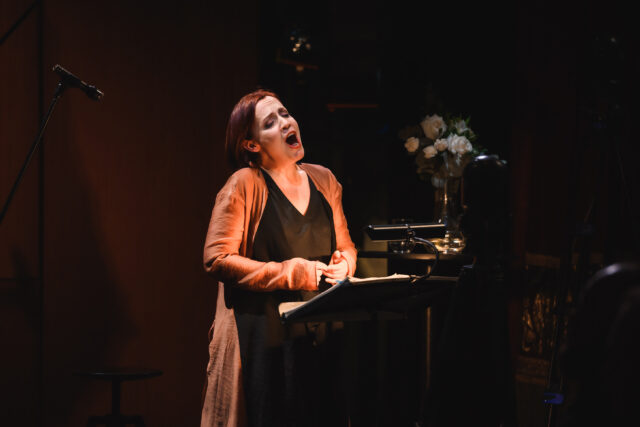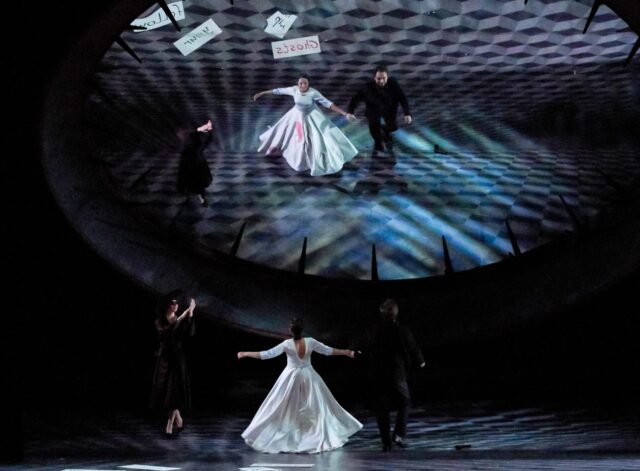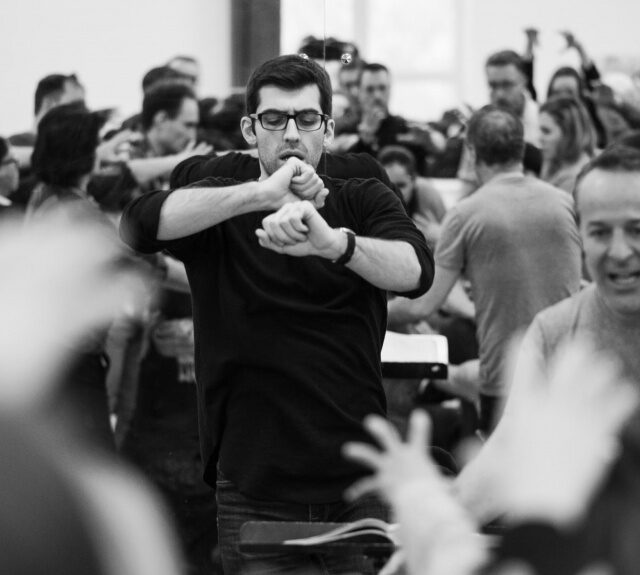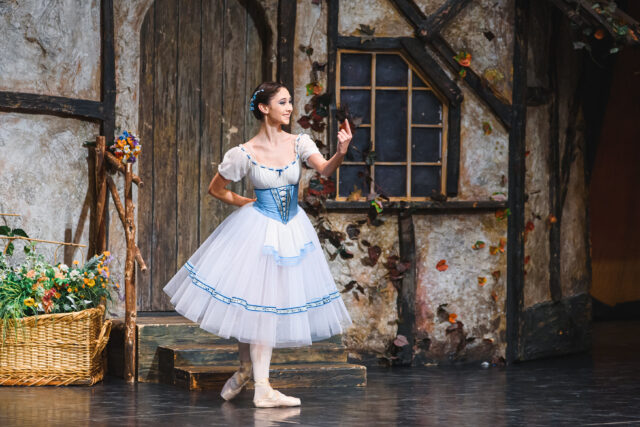William Forsythe’s ballet The Second Detail, set to Thom Willems’ score, has been staged at the Perm Opera and Ballet Theatre for the first time. The 20-minute ballet for 14 performers was brought to Perm by Assistant Choreographer Noah Gelber. TATYANA KUZNETSOVA reports from Perm.
The Second Detail rounded off a trilogy of modern works – it was joined in the programme by Alexey Miroshnichenko’s Variations on a Rococo Theme and Souvenir by Douglas Lee. The driving force behind the production, the company’s Artistic Director Alexey Miroshnichenko, is one ofRussia’s leading exponents of Forsythe: at the Mariinsky Theatre, the first inRussia to stage works by the eminent choreographer, he was the permanent coach for Forsythe’s ballets. Now, based on his enduring, St. Petersburg-fostered preference for classical art, Miroshnichenko has constructed a programme of late neoclassical ballet, hoping to prove to the audience that by no means should all contemporary ballet be thought of as ‘modern’.
In fact, The Second Detail, produced by Forsythe in the early 1990s in Canada, is one of the most classical works written by the renowned dismantler of classicism, who consciously tore up the fundamental principles of traditional ballet, pushing the dancers’ bodies to the brink of their physical capabilities. Unusually for Forsythe, his choreography in The Second Detail is almost academic. Not for nothing is a sign with the definite article ‘The’ erected at the front of the stage: the dance forms are so clearly defined that entire fragments can be described using traditional terms from classical exercises, whilst the performers’ attire is almost rehearsal dress – grey tights and leotards. The ballet begins with two positions taught in the first lesson at choreography school, effacé and croisé: shoulders facing one corner, head facing another, the right leg open to the front, exactly opposite the right shoulder. The arms, extended to the back beyond the shoulders, transform the classical position, destroying the body’s precise vertical positioning and bending it into a curve, twisted sideways.
And so, whether innocently exaggerating or ingeniously overdoing academic pas, Forsythe mocks the mannerisms of classical artistes: their tendency to carefully settle into fifth position before the start of a movement; the business-like, heels-first stroll with which they proudly move away from the centre of the classroom/stage having completed a particularly sophisticated combination successfully; the staunchly industrial relationships between partners; and their ability to submit to the corps de ballet flock, whilst at the same time striving to stand out from the crowd. Each of the 14 performers were allowed their share of the limelight: the procession of lightning-quick solos and duets, which flash up in between the measured accompaniment of the disciplined coryphées, carry serious risks – a sudden, abrupt bend during a long turn; a zigzag-shaped body, which makes rotating infinitely more complicated; legs embarking on anarchic trajectories; and other bids for freedom.
Towards the finale, a barefoot girl in a more-or-less designed white dress appears amongst the insurgent ‘factory workers’. Her expressionist leaps amongst the shapely ranks recall the sacrificial dance of the chosen victim from some sort of Rite of Spring. Her arms frantically depict her ‘pregnant’ stomach, and then break away from their joints; her skips are stripped of any hints of academicism, her heavy run, heels down first, and the violent tremor of her whole body make reference to prehistoric Shaman dances. After flying into a series of rages, the ‘Shaman girl’ falls flat on her back and dies, whilst the ‘academicians’ continue their



